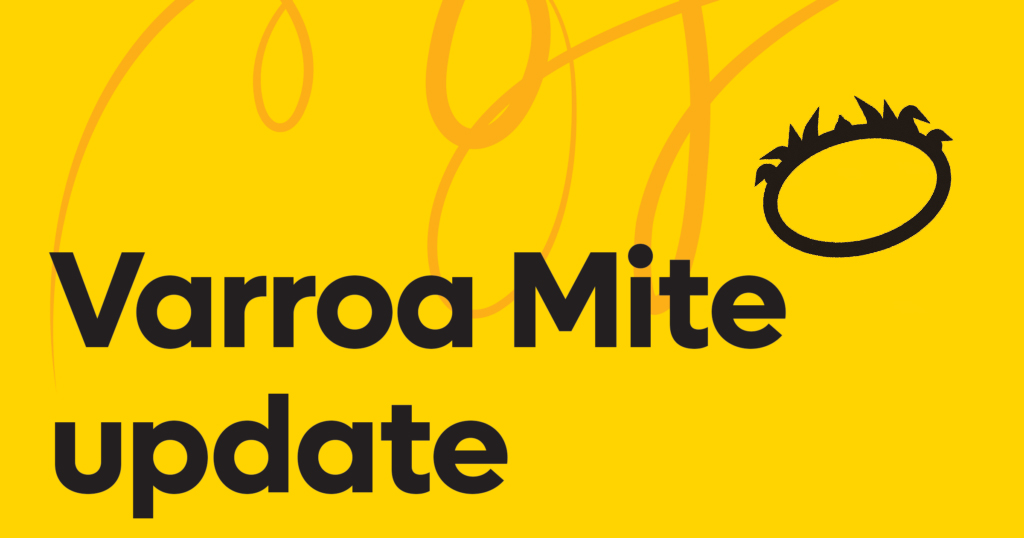AHBIC Industry Update 24 – 302 days of response
20 April 2023Varroa Response Update The total confirmed infected premises is now 152. DPI surveillance and tracing strategies are targeting hives that have been deemed dangerous contact premises (DCP’s) these can be […]

Varroa Response Update
The total confirmed infected premises is now 152. DPI surveillance and tracing strategies are targeting hives that have been deemed dangerous contact premises (DCP’s) these can be a mixture of RED, PURPLE and BLUE zone locations across the state. As a result of several hundred mats reaching the laboratories over the last few weeks, 2 new IP’s deep within the RED zone of Newcastle/Hunter have been identified which thankfully do not result in any changes the RED, PURPLE or BLUE zones.
In this update is also 2 detections which have been in the Woy Woy area of the Central Coast cluster which increase the RED zone and PURPLE zones slightly south east of the existing southern Central Coast area.
Field teams continue to focus on first round surveillance of the PURPLE zones, which is expected to reach completion mid May. The cooperation of industry and the community is vital in helping the response achieve the goal of eradication.
Alcohol Washing
Alcohol washing is a quick and effective method for detecting the presence and monitoring the level of Varroa mites within a honey bee colony. Alcohol washing can remove over 90% (with multiple washes) of external Varroa mites present on adult honey bees.
AHBIC reminds beekeepers that you are still required to complete and report your 16 week alcohol washes to the DPI through the website. This is a requirement of the Emergency Order in place in NSW.
The requirement has recently been reduced and depends on the number of hives at each apiary site:
- Less than 26 hives at a site – alcohol wash all hives at that site.
- More than 26 hives at a site – alcohol wash 26 of your hives at each site.
Wild European Honey Bee Management
The euthanasia of wild European honey bees in RED zones is a key component of eradicating Varroa mite. There are approximately 500 deployed wild European honey bee feeder stations. Well resourced WEHB teams indicate that 500 stations are scheduled to be operational across several of the newly confirmed RED zones including Wherrol Flat, Krambach and extensions of the Newcastle and Central Coast RED zones as well by the end of April.
Compliance Continues
NSW DPI continue to engage the help of NSW Police to assist with any non-compliant activities, this includes on the spot fines of up to $2,000 for those transporting bees without appropriate documentation on their person. As movements of hives pose a risk to the success of eradication, declarations and permits allow for critical traceability.
Feeding Bees: Blue Zone
AHBIC has had several enquiries regarding the feeding of bees in the BLUE zones over the last few weeks. DPI has since confirmed in the current Emergency Order no.11 that beekeepers operating in the BLUE zone of NSW are able to feed bees in the open, without the in-hive feeder requirements as in place for the PURPLE zones. This will allow beekeepers in the BLUE zones only, to continue to manage nutrition supplementation in the open for their colonies coming into winter for pollen, dry sugar or sugar syrup as normal for their operation.
Under 10 hives in a RED zone
If you have less than 10 hives in any of the RED zones your colonies may be impacted by the wild European Honey Bee Management Program. It is important to check with the DPI on 1800 084 881 and know your requirements to correctly:
- Remove honey supers (moving only within the RED zone)
- Let DPI know if you wish to retain your hive ware
- Contact the DPI if you plan to euthanise your own hives
- Contact the DPI if your hives show signs of insecticide treatment
